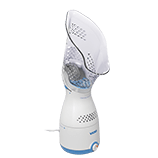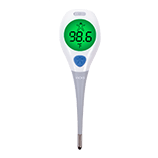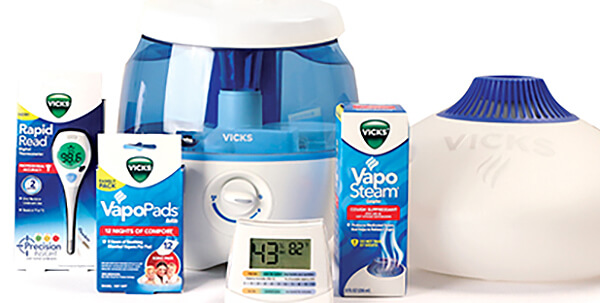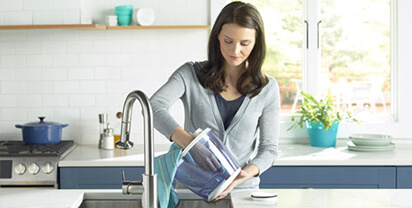
- Products
- Resources
-
-
Vicks products are available for purchase online and in-store at most major retailers.
-
-
- Support
-
-
VICKS SUPPORT
View product-specific FAQs & videos
-
-
- Products
- Resources
- SUPPORT
- Warranty Registration
- Contact Us
The Ultimate Guide to Choosing the Best Warm Air Humidifier for Your Home
When it comes to creating a comfortable living environment in your home, maintaining optimal humidity levels is crucial. One effective way to achieve this is by using a warm air humidifier. These devices not only add moisture to the air but also help in alleviating issues caused by dry air, such as dry skin, respiratory problems, and discomfort during the colder months.

With a variety of warm air humidifiers available on the market, choosing the right one can seem daunting.
In this ultimate guide, we will explore the different types of warm air humidifiers and key factors to consider when selecting the best one for your needs. From understanding the mechanics of warm air humidifiers to evaluating features like capacity, ease of maintenance, and safety options, we aim to equip you with the knowledge necessary to make an informed decision.
Whether you are new to humidifiers or looking to upgrade your existing model, this comprehensive guide will steer you toward a solution that enhances your home’s comfort and health.
How to Assess Your Home's Humidity Needs for Optimal Comfort
Assessing your home's humidity needs is essential for achieving optimal comfort, particularly in dry climates or during winter months. Humidity levels between 30% and 50% are generally recommended for residential spaces. To find out your specific needs, start by measuring the current humidity levels in your home using a hygrometer. This simple tool provides an accurate reading, enabling you to determine if your environment is too dry or excessively humid.
Once you've established your baseline humidity, consider the activities and the health of your household. For instance, if you have respiratory conditions or allergies, maintaining higher humidity can alleviate discomfort. In contrast, if you experience issues such as mold growth, lowering humidity may be necessary. Additionally, assess the size of your space—larger areas may require more robust humidification solutions. By closely examining these factors, you can make an informed decision when choosing the best warm air humidifier to enhance your home’s atmosphere and overall comfort.
The Ultimate Guide to Choosing the Best Warm Air Humidifier for Your Home
This bar chart displays the average indoor humidity levels across different seasons, helping you assess your home's humidity needs for optimal comfort.
How to Choose the Right Size Warm Air Humidifier for Your Space
Choosing the right size warm air humidifier for your space is crucial to ensure optimal humidity levels and comfort. According to the Environmental Protection Agency (EPA), maintaining indoor humidity between 30% and 50% can significantly improve air quality and reduce the risk of respiratory problems.
To select an appropriate humidifier, first consider the size of the room you intend to humidify. Humidifiers are typically rated in terms of square footage, and using a model that matches your room size will help achieve efficient moisture distribution.
For instance, a small room under 400 square feet may only require a humidifier with a capacity of 1-3 gallons per day, while larger spaces of 1000 square feet or more might need units that can handle upwards of 6 gallons a day. The Association of Home Appliance Manufacturers (AHAM) suggests that oversizing a unit can lead to excessive moisture, creating a breeding ground for mold and mildew, whereas an undersized humidifier will struggle to maintain the desired humidity level.
Therefore, conducting a proper assessment of your room’s dimensions and desired humidity will aid you in choosing a humidifier that meets your specific needs efficiently.
How to Evaluate the Features of Warm Air Humidifiers for Convenience
When choosing the best warm air humidifier for your home, evaluating the features for convenience is paramount. According to a report by the Environmental Protection Agency (EPA), maintaining indoor humidity levels between 30% and 50% can optimize comfort and health. Modern warm air humidifiers offer several key features that enhance user experience, such as digital humidistats, which automatically adjust the humidity output based on real-time readings. This not only saves energy but also ensures a consistent indoor climate.
Another important aspect to consider is the ease of maintenance. A survey conducted by the Home Appliance Manufacturers Association found that 72% of users prioritize low maintenance in their humidification devices. Features like removable water tanks and built-in demineralization cartridges significantly reduce the time and effort required to keep the humidifier operating efficiently.
Additionally, models with quiet operation modes, as highlighted in consumer reports, can make a significant difference, especially in bedrooms or workspaces, allowing for uninterrupted comfort throughout the day and night.
How to Maintain and Clean Your Warm Air Humidifier for Longevity
Maintaining and cleaning your warm air humidifier is essential for ensuring its longevity and optimal performance. Regular maintenance prevents the buildup of mold and mineral deposits, which can compromise air quality and the efficiency of the device. To start, ensure you empty the water tank daily if it’s not in continuous use. This simple act prevents stagnant water, which can be a breeding ground for bacteria.
Tips for cleaning your humidifier include using a mixture of distilled white vinegar and water to scrub the tank and the base. Vinegar effectively dissolves mineral buildup and disinfects surfaces. Make sure to rinse the tank thoroughly with clean water after cleaning to eliminate any vinegar residue the next time you use the humidifier. Additionally, replace the filter as recommended by the manufacturer—typically every month or as needed—to maintain air purity and humidity levels.
Another important aspect of maintenance is keeping the humidifier in a dry, well-ventilated area when not in use. Store it in a cool place to prevent damage and the growth of mold. Regularly check all components for wear and tear, and promptly address any issues to prolong the life of your humidifier. By following these cleaning and maintenance tips, you can enjoy a healthy and comfortable environment in your home.
How to Compare Top Models and Brands for Quality Performance
When comparing top models and brands for warm air humidifiers, it is essential to focus on several key performance indicators that define quality and efficiency.
Industry reports indicate that the optimal humidification capacity for residential units typically ranges from 20 to 50 liters per day, depending on room size and climate conditions. Choosing a model that fits this range will ensure effective moisture dispersion throughout the space.
Moreover, energy efficiency is a crucial factor to consider. Recent studies reveal that models with higher Energy Star ratings not only provide better humidity control but also result in significant cost savings on electricity bills, sometimes exceeding 30% compared to less efficient versions. Additionally, features such as automatic humidity sensors and programmable timers can enhance user convenience and optimize performance, minimizing the need for manual adjustments.
Furthermore, customer satisfaction plays a vital role in identifying top brands. Research from consumer reports has shown that brands with comprehensive warranties and responsive customer service tend to receive higher ratings. This places an emphasis on the importance of reliable after-sales support and product longevity in the decision-making process. Therefore, when selecting a warm air humidifier, looking into these performance metrics and customer feedback is crucial for making an informed choice.
Related Posts
-
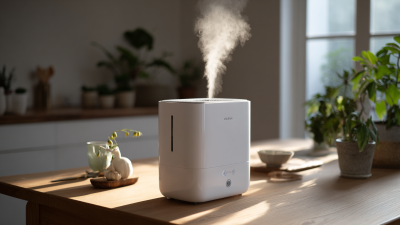
What Makes the Best Warm Steam Humidifier Essential for Your Health
-

How to Choose the Best Warm Humidifier for Your Home Environment
-

7 Top Benefits of Using a Warm Humidifier for Your Home Comfort
-

Top Strategies for Choosing the Best Cool Mist Humidifiers for Your Home
-

Humidifier Steamer Technology Comparison for Global Buyers Exploring the Best Options
-
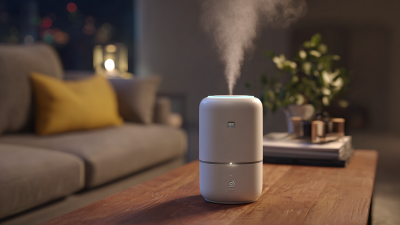
Discover the Ultimate Benefits of a Warm Air Humidifier for Your Home Environment





